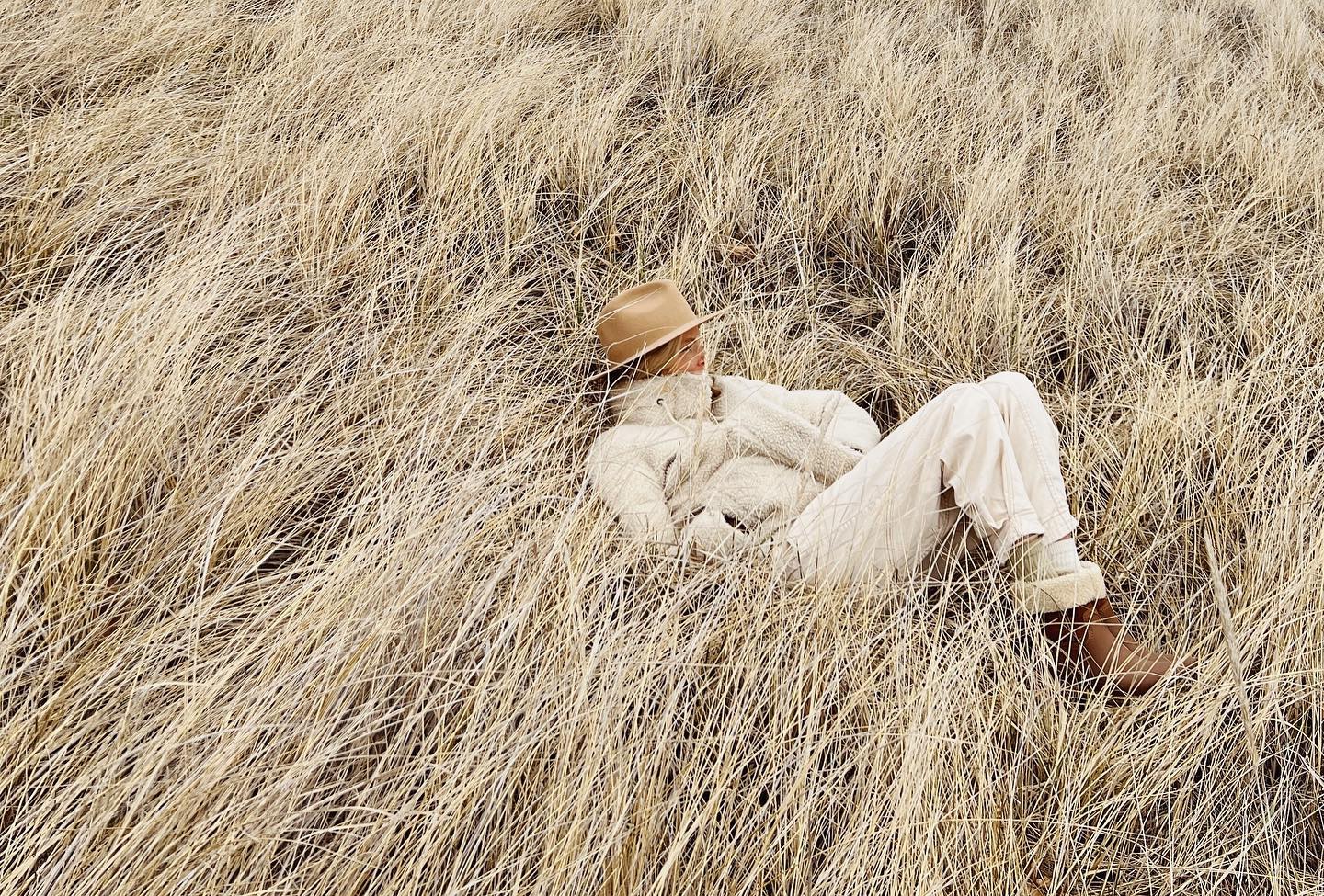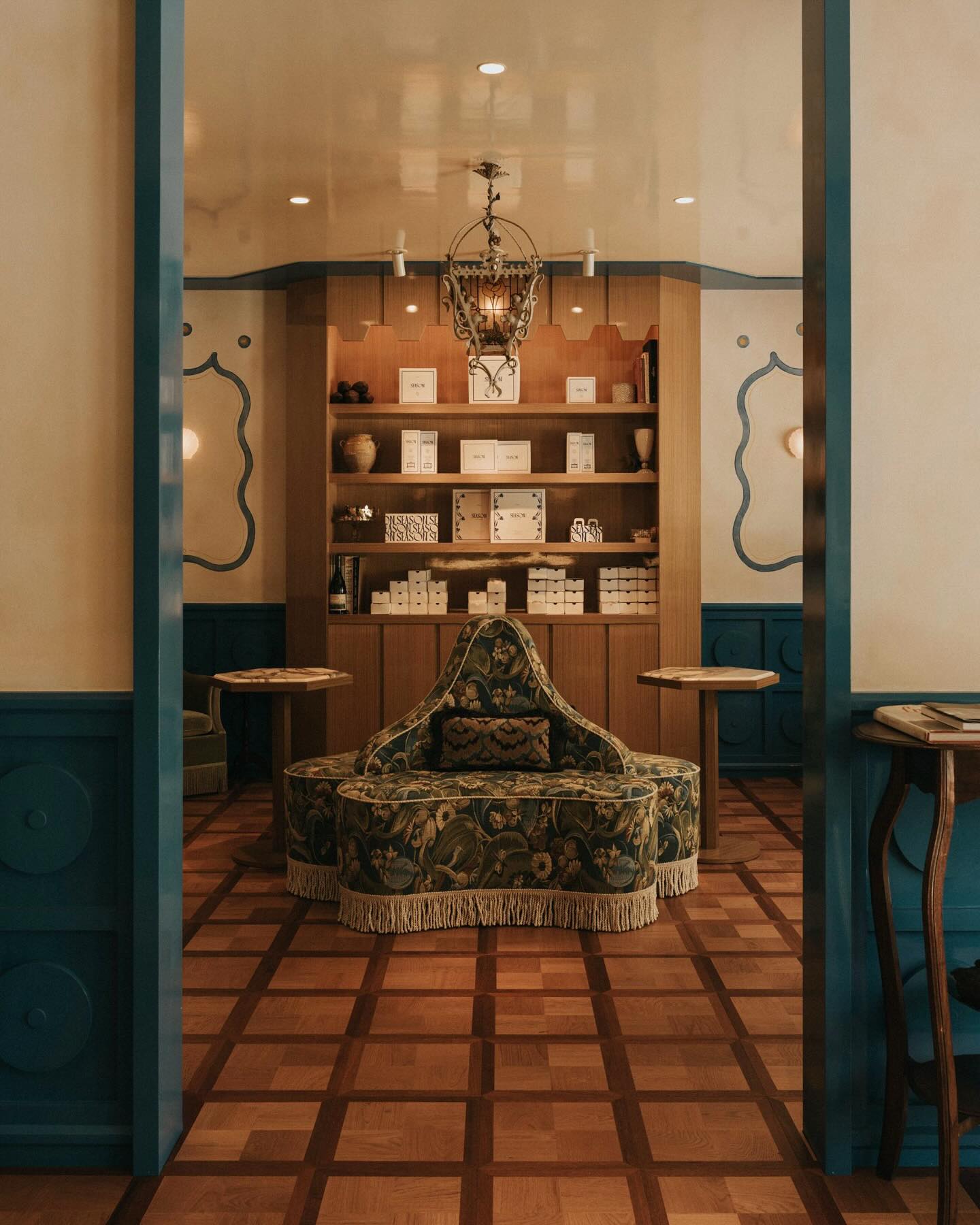
 A couple weeks ago I had to travel back to LA for work, and I got the chance to zip up north to partner with Cambria Estate Winery! I sat down with their winemaker, Jill Russell, to chat about the craft of winemaking and the importance of female leadership at Cambria. I often get asked where I find inspiration and one of my main sources is by learning about a different artistry or craft. Nothing can dig me out of a creative slump quicker than delving into a new type of skill, and I did just that with an afternoon at Cambria.
A couple weeks ago I had to travel back to LA for work, and I got the chance to zip up north to partner with Cambria Estate Winery! I sat down with their winemaker, Jill Russell, to chat about the craft of winemaking and the importance of female leadership at Cambria. I often get asked where I find inspiration and one of my main sources is by learning about a different artistry or craft. Nothing can dig me out of a creative slump quicker than delving into a new type of skill, and I did just that with an afternoon at Cambria.
I drove up from Los Angeles for the day, meandering through roads of open fields and vineyards, stopping for lunch in Los Olivos on the way while very excited for the day ahead. I haven’t been alone in the car sans one or two kids for a very long time, or have been able to do anything alone for that matter, so I really took it all in. Arriving at Cambria, Jill had a wine tasting all set up for me complete with a beautiful cheese plate from Fromagerie Sophie with wine pairing notes, and we dove right in.


 Pinot Noir is my go-to wine, so I was delighted to get to taste Cambria’s Rosé of Pinot. I also enjoyed three of their Pinots while Jill told me the back story on what goes into making the perfect Pinot.
Pinot Noir is my go-to wine, so I was delighted to get to taste Cambria’s Rosé of Pinot. I also enjoyed three of their Pinots while Jill told me the back story on what goes into making the perfect Pinot.
According to Jill, Pinot grapes are finicky grapes (figures I would love them so much): They require patience and the ability to react quickly to weather changes. Climate plays a huge role and that’s where Cambria has a literal step up. The vineyards sit atop the Santa Maria Bench which was once a riverbed, but now is a ledge that sits high above the valley floor. I learned how the inherent rocky soil lends itself to excellent drainage, and how the valley that Cambria is situated in is one of the only East-West facing valleys. This means the valley’s opening is faced towards the ocean, funneling in cool maritime wind and fog, giving Cambria one of the longest growing seasons. Even on hot summer days, the cool air will flow in from the ocean in the early evening, giving the temperamental Pinot grape what it needs to achieve perfectly balanced ripeness.
The thing that struck me the most while chatting with Jill about the wines and her job was that Cambria wines are all single-vineyard. This means everything is grown, produced and bottled right there on the estate. This is not only ideal for the grape (the least amount of travel for a grape, the better), but it gives them full control from start to finish, which I find SO important in virtually every craft. It makes it easier to give full attention to detail, and you know I am ALL about the details.


 After the tasting, Jill took me on a full tour of the estate, and we dove deeper into the history of Cambria and what it is actually like to be a winemaker (and we tasted grapes, played in the dirt, and took a few Boomerangs…as one does).
After the tasting, Jill took me on a full tour of the estate, and we dove deeper into the history of Cambria and what it is actually like to be a winemaker (and we tasted grapes, played in the dirt, and took a few Boomerangs…as one does).
Cambria was founded by wine icon Jess Jackson and his wife Barbara Banke in 1986. Their daughters, Katie Jackson and Julia Jackson, grew up among the vines and continue the family business alongside Barbara. Jill was hired as winemaker in June 2017 to continue Cambria’s legacy of talented women winemakers. Cambria has strong women in leadership roles as well as out in the vineyard, and I thought it was interesting to hear that the female vineyard-workers were sometimes preferred, as they were considered to have a more discerning eye and attention to detail when harvesting grapes.
So, what does a typical day look like for a winemaker? According to Jill… it is “Busy!” From Jill: “During harvest, I arrive at the winery around 5:30am, check in with the teams and get to work calling picks, writing work orders for various fermentation activities including punchdown schedules, yeast additions, and so forth. I’m constantly walking the vineyards, checking the crushpad and making sure things are running smoothly for when grapes come in. Post-harvest, it’s all about the tanks and barrels – here I’m tasting wines, seeing how they’re progressing and running blending trials to determine the final blends for our wines.”
I was curious how one can get creative in the wine business since Jill mentioned that it is part farming, part artistry and part science. She explained how her favorite way to get creative is running new blending trials and the freedom of considering, “What happens if I try this? or this?” There are so many variables to get creative with. Her mind is always thinking of new methods or blends to test out.

 I asked Jill what sets Cambria apart from other wines, and her reply was that she strives for three distinct qualities when crafting their single-vineyard wines — texture, harmony and energy.
I asked Jill what sets Cambria apart from other wines, and her reply was that she strives for three distinct qualities when crafting their single-vineyard wines — texture, harmony and energy.
From Jill: “Textural beauty is so important, I like our wines to have a multidimensional mouthfeel, full of layers, expressions of fruit and finish. In combination with texture, I focus on the harmony of how aromas, fruit, other flavors, acidity and tannins all behave together in the glass to truly represent the place where the wine comes from.”
As Jill talks about what she strives for in her winemaking, I can’t help but see the parallel in the work I do as a designer, as well as the work of other artists and makers across the board. For example, the search for that harmony or balance. I talk a lot about how I strive for balance in interior spaces —just replace flavors and tannins with visual weight, pattern, and colors, and she could have taken the words right out of my mouth. Then when it comes to “energy,” it is even more apparent. I always want whoever experiences my work to feel something, and feel the love and the story behind it. The same goes for the wine of Cambria. Jill wants the wine to make you feel the energy, and know that the wines you drink from them are lovingly made by a team of passionate wine lovers.
As a fan of Pinot Noir, Julia’s Vineyard has this amazing “Santa Maria Spice” as Jill explains, that isn’t the traditional sweet spice you may find in other red wines, but something a bit more savory like Chinese Five Spice. It really achieves that harmony in texture that Jill is so passionate about it! On the other hand, Katherine’s Chardonnay has this beautiful bright acidity and pretty citrusy floral notes. This isn’t your mother’s oaky, buttery Chardonnay (not that there’s anything wrong with those), but it truly tastes like the place. The tour of the estate and vineyards with Jill really illustrated how these single-vineyard wines are able to showcase the terroir they come from in the glass. This isn’t a blending of flavors from different areas, this is Cambria’s rocks, earth, fog, and wind all neatly captured in a bottle.

 After all the inspiration I had gleaned from my visit to Cambria, I asked Jill where she found her inspiration. She finds it in her colleagues and from just drinking wine from around the world (sign me up). She explains that there are so many fantastic producers, “I’m always learning and always getting excited about the next vintage.”
After all the inspiration I had gleaned from my visit to Cambria, I asked Jill where she found her inspiration. She finds it in her colleagues and from just drinking wine from around the world (sign me up). She explains that there are so many fantastic producers, “I’m always learning and always getting excited about the next vintage.”
Interested in getting into the wine business? I asked Jill if she had any advice for someone who thinks he or she might want to work with wine. Her answer was the same that I often give to people interested in getting into design — and that is to just get working! She advises, “The best thing you can do is get a job at a winery, whether it’s a part-time gig at a tasting room or a full-on harvest internship. No matter where you start, you’ll learn so much about the industry and can start to forge your own path in where you want to work whether it’s in the vineyard, in the cellar, in operations, marketing or working with customers.”
Thank you for following along, I loved getting to learn more of the origins of some of my favorite wines and I hope you did too! I will definitely be back.
This post is paid for by Cambria Estate Winery.





What a fun post! I’ve been to Cambria many, many times and I absolutely not only love their wine varietals, but the story of their vineyard too. Glad you had such an enjoyable time too! P.S. Super cute dress!
Thank you! It was such a great trip. And yes that dress. Doen…they are too good.